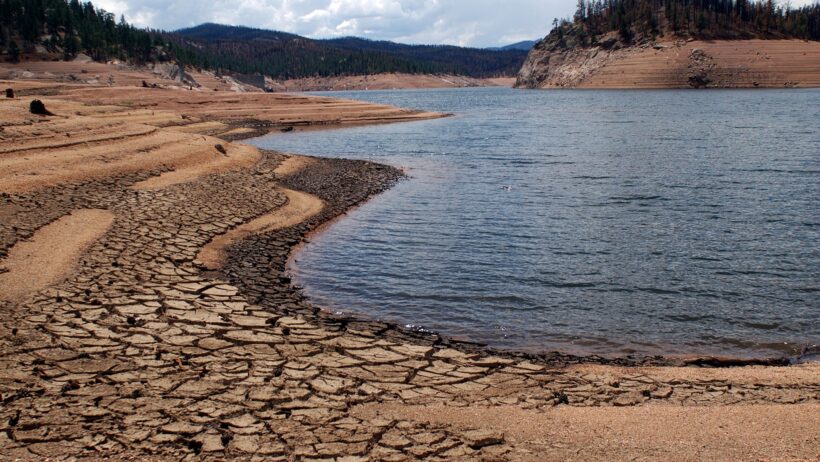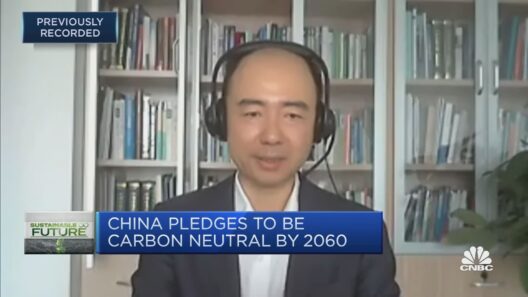The Colorado River, often touted as the lifeblood of the Western United States, has been facing unprecedented challenges. Its waters quench the thirst of millions, irrigate agricultural fields, and support diverse ecosystems. Yet, as we contemplate the future, one might ask, “Is there a climate miracle on the horizon for the Colorado River, or are we merely witnessing an illusion of hope amidst an impending catastrophe?” This question encapsulates the dual nature of our predicament—while there are glimmers of optimism, formidable challenges loom ahead.
The ramifications of climate change are palpable in the Colorado River basin; shrinking snowpacks, erratic rainfall patterns, and rising temperatures have conspired to create a dire water scarcity. Over the past century, the river’s flow has diminished significantly, a trend exacerbated by spiraling demand due to population growth and agricultural expansion. This precarious situation has led to unprecedented measures by states and local communities—water conservation initiatives, drought contingency plans, and even the exploration of innovative technologies. Yet, we must contemplate whether these measures are sufficient to confront the existential crisis our water systems currently face.
Historically, the Colorado River has been a symbol of prosperity and resilience. Indigenous cultures thrived along its banks, and its waters were meticulously managed for centuries. However, as modern society burgeoned, so did the over-extraction of its resources. The advent of large-scale agricultural practices and urbanization transformed this once pristine waterway into a strained ecosystem. This leads to the notion that perhaps management strategies are the crux of our salvation, providing a potential miracle within reach. Yet, can mere policy changes genuinely reverse the damage wrought by decades of exploitation?
One promising avenue lies in the paradigm shift toward sustainable water management. Implementing robust conservation measures—such as rainwater harvesting, desalination technology, and targeted irrigation practices—could fundamentally alter the trajectory of the river’s health. Innovative solutions, such as water recycling and greywater systems, are being explored by municipalities. These technologies represent both an opportunity and a challenge. How do we balance technological advancement with the preservation of local ecosystems? Embracing sustainability may not merely be an environmental necessity; it could also be the harbinger of economic opportunity, fostering new industries focused on green technologies.
Moreover, the collaborative approach amongst the seven basin states—Arizona, California, Colorado, Nevada, New Mexico, Utah, and Wyoming—marks a pivotal moment in the discourse surrounding the Colorado River. The 2019 Drought Contingency Plan stands as a testament to the resolve of these states to negotiate equitable water use amidst dwindling supplies. But one must consider the implications of such agreements. Are these compacts a genuine collaborative effort or a temporary bandage over deeper, systemic issues rooted in water governance?
Additionally, the intertwining of climate change and social equity presents another layer of complexity. Communities disproportionately affected by water scarcity, often marginalized groups, bear the brunt of these challenges. The fight for water rights is not only about resource allocation but also about justice, accountability, and inclusivity in decision-making processes. Can we envision a climate miracle that encompasses not just ecological restoration, but also the empowerment of all communities reliant on the Colorado River? This question underscores the critical need for inclusive governance, where diverse voices are not only heard but actively shape policies that affect their livelihoods.
While the aspirations for a climate miracle are laudable, it is crucial to maintain a robust skepticism. The multifaceted obstacles confronting the Colorado River require not only innovative strategies but also visionary leadership that recognizes the intrinsic value of water as a shared resource. Navigating the implications of climate change demands that we re-evaluate outdated paradigms and foster an ethic of stewardship, rooted in the understanding that water is a sacred element, deserving of protection and reverence.
To confront these challenges, education and public awareness campaigns are indispensable. Engaging communities in discussions about the impacts of climate change on water resources can stimulate grassroots movements that drive real change at local levels. Cultivating a culture of conservation may be the most potent solution to incur long-term sustainability. Yet, as we endeavor toward these goals, it is worth asking: will we rise to the challenge with both urgency and pragmatism, or will we succumb to complacency and ignorance?
The situation of the Colorado River serves as a microcosm of a larger global narrative; water scarcity is not merely a local issue—it is an international crisis that affects millions across continents. Therefore, as we grapple with the hope of a climate miracle, we must foster international collaborations that address transboundary water challenges. Possibilities such as sharing best practices, innovative technologies, and sustainable practices could yield beneficial outcomes across various regions experiencing similar predicaments.
Ultimately, the conversation surrounding the Colorado River should inspire a movement—one that transcends borders and champions a collective commitment to environmental stewardship. This potential climate miracle hinges on the recognition that the preservation of our planet is inextricably linked to the rivers that sustain it. The question then is not merely about whether a miracle is possible, but whether we, as a society, are prepared to forge paths that lead us toward a sustainable and equitable future.







